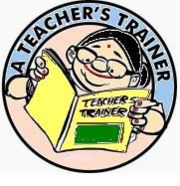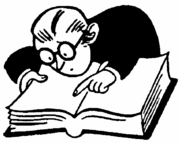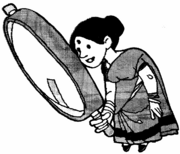FUNCTIONS OF DIETS
FUNCTIONS OF DIETs/CTEs
FUNCTIONS OF DIETs/CTEs
Functions of DIETs/CTEs can be classified into four categories.
- Developing,Organising, managing and supervision of Training
- Educational Resources support
- As a reseach centre
- Miscellaneous
DIETs/CTEs: Mission
“To provide academic and resource support (vide para 1.5) at the grass-roots level for the success of the various strategies and programmes being undertaken in the areas of elementary and adult education”
The main reasons for this kind of categories of functions of DIET are as follows:
- As Teacher Education is a continuous process it cannot be classified as pre-service and in-service.
- If DIETs/CTEs are fully equipped with both human and material resources the quality of education at district level can be raised.
- If appropriate facilities are available in the DIETs/CTEs to train adult eduction workers and elementary school teachers UEE can be achieved.
- DIET will integrate both formal and informal agency of elementary education so as to ascertain and ensure equal level or standard,
- DIET/CTE will also coordinate its functions with the functions of other district level departments who have active role for the cause of elementary education in terms of monitoring.
- DIETs/CTEs also have to perform evaluation, liaison with the higher authorities, formulate plans and related primary education to secondary education.
![]() You may know about the structure and functions of DIETs/CTEs of Karnataka and also their e-mail IDs at this site
[1]
You may know about the structure and functions of DIETs/CTEs of Karnataka and also their e-mail IDs at this site
[1]
![]() Please click here to know more about the functions of DIETs/CTEs in general at this site
[2]
Please click here to know more about the functions of DIETs/CTEs in general at this site
[2]
TRAINING
Before implimenting the trainings DIETs/CTEs have got autonomy
- To conduct the surveys of techer identified needs and trainer identified needs.
- To Design the training module according to the local needs
DIETs are expected to provide training inputs to the following personnel of the district
i.) Elementary school teachers. (Pre and In-service)
ii.) Heads of schools, school complexes and educational officers at the cluster and block levels.
iii.) Instructors and supervisors of adult education.
iv.) Members of District Education Council, Members of SDMC,CAC, social leaders,women of self help groups and youths and volunteers who are involved in educational programmes.
v.) Identified Resource persons who can be utilised by DIETs for its programmes.
CTEs are expected to provide training inputs to the following personnel of the district
i.) Secondary school teachers. (Pre and In-service)
ii.) Heads of schools, school complexes and educational officers at the district levels.
iii.) Members of SDMC,CAC,Council, social leaders,women of self help groups and youths and volunteers who are involved in educational programmes.
iv.)Establishing Co-ordination with Universities.
v.) Identified Resource persons who can be utilised by CTEs for its programmes.
RESOURCE SUPPORT
Providing educational services, resources and advice to elementary schools and adult education centers in the district level in the form of:
- Extension services through its actions and interactions.
- As a resource center for instructors and teachers.
- Provide Teaching and Learning material and evaluation tools.
- Functioning as evaluation center for formal and non-formal educational institutions.
- Provide resource support to state agencies in the form of data, software, etc.
- Provide advanced technology resource support.
RESEARCH
In order to sustain the status and position conferred on them and in a state of readiness to meet the challenges of the future, DIETs/CTEs have to be continuously equipping themselves. What is this process? Getting books, furniture, more people, and machinery, teaching aids, students - more of these?
To an extent, yes. But, above all, equipping means having a firm understanding of the changing circumstances. Today enrolment in schools is improving but quality of attainment is poor. Tomorrow, attainment standards might improve and higher level could be aspired. Diversified courses could be started. Different kinds and types of teacher training might be introduced. When the whole population is brought into the school-fold, the methodology of catering to their needs might vary. The capacity to deal with this challenge of the future cannot be given by an outsider/agency but has to emerge from within. This ‘emerging’ is possible when the institutions undertake research work in elementary education and work with the teacher to undertake ‘Action research’ to solve the problems in school activities. Only then perhaps the institution is set in motion. This activity should be integrated in the regular day-to-day functions of the faculty in DIETs/CTEs.
MISCELLANEOUS FUNCTIONS
The three functions noted above create a multitude of activities/functions. They are:
- Regular monitoring of the learning imparted in schools and evolving monitoring mechanism with local specific inputs.
- Evaluating several schemes and programmes introduced/implemented by the department. This calls for different abilities. i.e., collection of the data (quantitative and qualitative) compilation of data, analysis-inference, reporting etc.
- Coordination with the various agencies involved in the promotion of elementary education.
- Interacting with various projects and implementing new-projects, building & developing the capacity of the community.
- Practicing a participatory approach in all programmes and trainings conducted.
- Conducting various exams called Departmental examination of KPSC,Commerce exams,Hindi and music exams.
- It acts as a nodal agency of centralised admission of B.Ed., and D.Ed., courses.
|
In the background of this section on DIET/CTE Functions, do you think that your DIET/CTE has been performing all these functions to your satisfaction? Do you think that your DIET/CTE has a positive public image in the eyes of the stakeholders such as parents, teachers, administrators, etc. Substantiate your views. Discuss with your colleagues and suggest how a DIET/CTE should function to retain positive image. Send your reflections to spnaik62@gmail.com |
|
You may be wondering whether there are ways in which the public image of an institution can be changed? If you seek to know how to go about with this, you may visit the following Wiki Educator Site: [[3]]Public Relations For more information on status of teacher education you may visit[[4]]here |
DIETs/CTEs Mission “To provide academic and resource support (vide para 1.5) at the grass-roots level for the success of the various strategies and programmes being undertaken in the areas of elementary and adult education”
CONTENTS
This Chapter consists of Following Sections
FUNCTIONS OF DIETS
COMPETENCIES OF DIET FUNCTIONARIES
LINKAGES - ACADEMIC
LINKAGES - ADMINISTRATIVE
LINKAGES - NON GOVERNMENTAL ORGANISATIONS
RESTRUCTURING OF DIET []
BRIEF INTRODUCTION TO C.T.E
DIET/CTE ROLES AND FUNCTIONS
This section has been titled as DIET/CTE ROLES AND FUNCTIONS because the DIET Principal's,Sr lecturer's and lecturer's roles and functions are also the functions of the DIETs. Secondly, though our concern is with the roles of individuals, they are understood better in the context of the institution in which these roles are performed.
Objectives The Programme
This section of the programme is aimed at
Understanding the roles and responsibilities of a DIET/CTE functionary in the context of the functions of a DIET/CTE Critically examine the inter relationship of various wings in the DIET and rebuild appropriate relationships Assess the multiple tasks and capabilities required by each faculty member to achieve progress.
THE ESTABLISHMENT OF DIETs/CTEs
Perform This
Universalisation of elementary education and eradication of adult illiteracy were two important objectives of post-independent India. Though as a result of constructive efforts the literacy percentage 16.7% in 1961 raised to 52.11% in 1991, and 61% in 2007, the dream of complete literacy has remained only a dream. (Could present a graph and ask them to interpret/Read an article and Conclude)
The difference in literacy rates between male and female, rural and urban, advantaged and disadvantaged groups are quite alarming even today. The gaps are more than 20%.
In universalisation of elementary education, universal enrolment, universal attendance and universal attainment are the three challenges. Efforts are made under DPEP and SSA to ensure the first two, yet we are unable to improve the quality of elementary education. In view of this, the Government of India introduced Minimum Levels of Learning programme to raise the learning levels of children and ensure an equitable quality across different contexts of schooling.
Yearwise growth of TCH Institutions
To fulfill these basic requirements of elementary education, we need responsible teachers who can serve the cause more judiciously. To keep elementary teachers more active through continuous training, giving opportunity for continuing their education for the enhancement of their professional competencies. National and state level institutions like NCERT, NIEPA, DSERT etc. exist to cater to the needs of our elementary education. But, India as a geographically huge nation needs decentralisation.
Recent years have witnessed an enormous growth in elementary schools and adult education centers. This lead to the establishment of district level institutions to meet immediate needs of the teachers. Thus District Institutions of Education and Training (DIETs) have been setup in each district and Coollege of Teacher Education (CTE) in identified places.
The DIETs/CTEs have been established with all the required infrastructural facilities so as to meet the pre-service and inservice training needs and other requirements of primary education functionaries. Often, DIET is seen as an agency linking primary and secondary school system too.
Reading
Read this writeup on DIET
http://www.educationforallinindia.com/page112.html
Activity Prepare a Write-up
Prepare a list of agencies involved in the promotion of primary/secondary education in your district/districts. Send the Completed Activity Sheet to:
your online facilitator and mark a copy to kumaraswamy64@gmail.com ,dietvishu@hotmail.com dakshayinisadpi@gmail.com
THE STRUCTURE OF A DIET
The DIETs have been established by upgrading erstwhile teacher training institutions in each district.DIETs which have been established with a Mission of “Providing academic and resource support (vide para 1.5) at the grass-roots level for the success of the various strategies and programmes being undertaken in the areas of elementary and adult education.
The structure of these new establishments has been evoloved considering the functions of the DIETs. You are aware that the structure of a DIET is visualized as consisting of the following seven wings.
(Diagram)
Lab Area
The Lab Area Approach of District Institutes of Education and Training
Lab area activities-Shimoga
Summary Main Points
What has been presented in this section may be summarised as follows:
DIETs have been established by upgrading the pre-service teacher training institutions. DIETs have been visualised as an academic and intellectual body at the district level to offer all the support required to improve the standard of primary education. The main functions of a DIET are identified in the background of achieving UEE. They are training, resource support, research and monitoring, evaluation, coordination etc. The DIET faculty, in order to fulfil the roles and responsibilities assigned and to be able to meet future demands, need to develop certain competencies with self effort/involvement and through following the directions of State/National agencies.




